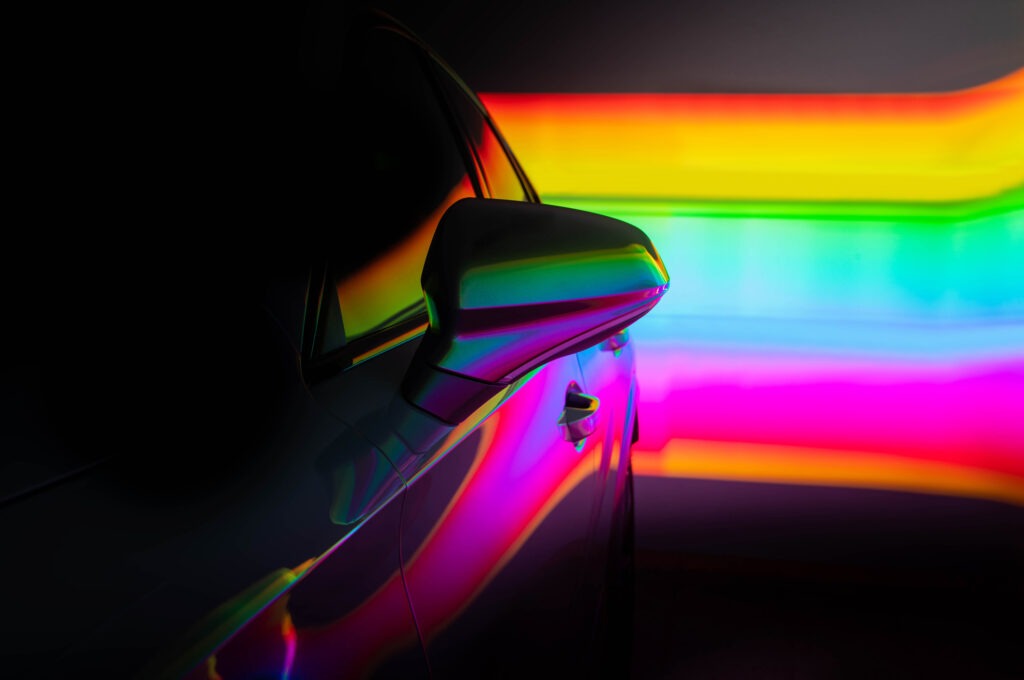Tesla Model Y continues to lead global EV sales in August
16 October 2023

Global registrations of electric vehicles (EVs) in August were up 45% year on year. José Pontes, data director at EV-volumes.com reviews the market’s performance.
Over 1,238,000 battery-electric vehicles (BEVs) and plug-in hybrids (PHEVs) were registered across the world in August. This meant EVs represented 18% of all new-vehicle sales globally, with BEVs alone accounting for 13%. When combined with 800,000 non-plug-in hybrids, electrified vehicles accounted for roughly a quarter of the new car market.
These latest figures confirm that the global automotive market is well within the steepest part of the technology’s adoption S-curve, otherwise known as the electric disruption zone. Market share can be expected to see the greatest rate of growth between 10%-20% and 80%-90%, later slowing on the way to 100%.
Tesla stays on top
The Tesla Model Y remained high above its competitors in August, recording its best-ever ‘off-peak’ month, given the carmaker delivers a majority of its vehicles quarterly. Meanwhile, the Model 3 lost the race for second place to the BYD Song. However, refreshed Model 3 deliveries are expected to begin in October, a move that can be expected to tilt this race heavily in favour of the US sedan.
The BEV version of the BYD Song saw a record month with 9,081 registrations. The midsize model could soon report a greater balance between its PHEV and BEV versions. Elsewhere for the Chinese brand, the Seagull came in fifth and the Dolphin in seventh. Both models posted record performances, with the larger Dolphin hatchback recording 32,288 units and the small Seagull EV seeing 34,841 units delivered in the month.
The Dolphin benefitted from the start of exports and could be a future top-three contender. The Seagull, meanwhile, is rapidly ramping up production, reaching close to 35,000 registrations in only its fifth full month on the market. The model has the potential to one day threaten the Model Y’s leadership position.
There was another record performance in the top half of the table. The eighth-place GAC Aion Y saw 26,719 registrations, its best performance to date. Outside of Tesla and BYD, it was the top-selling model in the August rankings. With 22,650 registrations, the GAC Aion S came in 10th. With only three brands in the top ten, it appears GAC is the only carmaker capable of running at the same pace as BYD and Tesla.
The second half of the table saw two midsize PHEV sedans hit record results. The 16th-place BYD Destroyer 05 posted its third record month in a row with 12,096 registrations, while the 20th-place Geely Galaxy L7 hit 11,117 units.
In 16th, the Volkswagen (VW) ID.3 also shined, taking 14,363 registrations. The model benefitted from a significant price cut in China, allowing it to jump into record territory. This price cut raises an important point regarding varying vehicle prices across different markets.
There is a slight fallacy regarding the price difference between EVs in China and Europe. While part of the difference is due to OEM margins, these are far smaller than most people suspect. Comparing the domestic and European prices of an EV made in China, VAT sits at 13% for the former and 23% in Europe. This alone will increase the price by around 10% in the region.
Adding the 10% tariff import tax results in a 20% price difference between the two markets. With roughly €1,900 in additional shipping costs to Europe, the primary explanations for the price differences between the two markets are apparent.
Outside the top 20
Outside the top 20, from biggest to smallest, the Li Auto L9 hit a record 10,933 registrations. Alongside the strong results of the brand’s other two models, Li Auto was firing on all cylinders. Every vehicle the company makes has already been sold, something no other OEM can claim.
In the midsize category, the highlights came mostly from Korea. The Hyundai Ioniq 5 (10,510 units), Ioniq 6 (5,084 units), and Kia EV6 (9,561 units) all posted record results. It appears the Korean OEM has finally solved its battery constraint issues and is ready to increase output by a significant margin. Another model on the rise is Changan’s Deepal S7, the Chinese brand’s take on the Tesla Model Y. It reached a record 8,891 registrations in August.
As for the compact category, the Skoda Enyaq achieved its third record performance in a row. The model scored 8,226 registrations in August. Great Wall’s Ora Good Cat reported 9,616 registrations, the hatchback’s best result since December 2021.
BYD advances
Between January and August, while Tesla ruled the market with the Model Y, the Model 3 could not resist the advance of the BYD Song, dropping to third place in the year-to-date figures. With the model in the middle of a refresh, the Chinese SUV can be expected to retain the runner-up spot for a few more months. The Model 3 should regain silver in December as deliveries of the updated sedan make their way to customers.
The BYD Seagull pulled off a five-place jump from 18th to 13th. It is likely to keep rising until the year end and can be expected to finish 2023 in the top 10. The GAC Aion Y took 10th and is looking to surpass the BYD Han in ninth. Elsewhere, VW will be hoping the rejuvenated ID.3 can improve on its 17th position and climb a couple more spots in the coming months.
Finally, making its top 20 debut, the Li Auto L7 appeared in 20th. The L8, was 21st, some 1,500 units behind. Both the Volvo XC40 and the Hyundai Ioniq 5 are in danger of dropping out of the table, as Li Auto is looking to place all three of its models in the top 20.
Record brand streaks
BYD continued its impressive brand record streak in August with a 261,000-unit performance. Tesla also posted its best off-peak month ever, holding second. GAC Aion ended the month in third, banking on its Aion Y and Aion S models to get its third consecutive record performance, with 51,570 registrations in total. VW took fourth, only 400 units ahead of German rival BMW.
Seventh-place Li Auto posted its fifth record month in a row with close to 35,000 registrations, thanks to strong results across its line-up. With the high-end brand still suffering supply constraints, it can be expected to keep beating records in the months ahead, especially when the L6 and L5 models land in 2024.
The middle of the table saw 12th-place Hyundai score a record 25,551 registrations, thanks to good results from the Ioniq 5 and 6. With the new Kona EV now reaching dealerships, the Korean brand is likely to continue this success. One of the biggest surprises in August came from Nio, which saw 20,846 registrations, giving it a best-ever monthly figure. This was thanks to strong deliveries of the ES6 SUV and the ET5 sedan.
In 16th, Toyota achieved 17,370 registrations, while 20th-place XPeng seemed to be back on track with 13,763 registrations, marking its strongest performance since June 2022. Over half of this volume came from the promising G6 crossover, which posted 7,068 units in August, only its second month on the market.
Outside the top 20, 21st-place Hozon achieved 13,623 registrations, a new record for 2023. Great Wall’s Ora brand recorded 10,301 new units, its best result since June 2022, mostly thanks to the Good Cat hatchback. Stellantis did not manage to place any brands in the top 20, with Jeep in 22nd (12,481 units). Nevertheless, Opel managed a year-best result of 10,315 registrations.
A third of the market
In the first eight months of 2023, BYD stayed ahead of Tesla, with the two brands jointly responsible for more than one-third of the global EV market. Far below, GAC Aion managed to surpass BMW. The German brand sat ahead of its domestic competitor VW, while Mercedes-Benz held seventh, albeit some way back in registration figures.
The rise of Li Auto has been paused in eighth, but expect the Chinese brand to continue shortening the distance to Mercedes-Benz in the coming months. The remaining highlights occurred in the second half of the table, with Toyota climbing to 16th, as it continues its journey into electrification beyond full-hybrid technology. Finally, Nio has been climbing quickly, thanks to another record performance which put it in 17th.
BYD comfortable
Looking at registrations by OEM, with brands grouped under their parent company, BYD held a comfortable lead with 21.8% of the global new-EV market in the first eight months of the year, while Tesla was down to a 14.4% share.
Third place went to VW Group (7.3%, down from 7.4%), keeping a good distance from fourth-place Geely–Volvo (6.1%). As for fifth-place SAIC (5.4%, down from 5.6%), the company’s share loss resumed, but its closest competitor, sixth-place Stellantis, was also down in the year to date to 4.6%.
Seventh-place BMW Group (4.1% share) gained a precious 4,000-unit advantage over eighth-place Hyundai–Kia (also 4.1%). But ninth-place GAC (4%) is just 8,000 units behind the German OEM. The Chinese carmaker could jump two positions in September alone thanks to continuing strong performances.
Looking at the rankings from August 2022 alone, both the top two brands grew their market share, 4.9% for BYD and 2% for Tesla. Geely–Volvo surpassed SAIC and gained a 0.4% share compared to the same period last year. Meanwhile, VW Group lost 1% share, while SAIC dropped almost a third of its share, from 7.9% a year ago to its current 5.4%.
Tesla’s BEV boast
Looking just at BEVs, Tesla remained in the lead with a 20.6% share year to date. The US company has a comfortable lead over BYD (15.7%), making it unlikely that the Chinese carmaker will be able to remove Tesla from the top spot this year. In third place, VW Group (7.8%) gained ground over SAIC (7.5%). There was a position change in fifth, with Geely–Volvo (5.6%) narrowly surpassed by rising GAC (5.6%).
Comparing BEVs to where they were in August last year, the EV-market trend was roughly followed. BYD and Tesla were up and SAIC was down. But VW Group managed to gain a 0.5% share year-on-year, which can only be explained by the German OEM moving away from PHEVs and becoming a more BEV-based company.
Finally, BYD and Tesla's current domination cannot be expected to last for many years, because the entry barrier for EV business is now far lower than in the ICE era. A more diverse and dynamic automotive landscape can be expected in the future.



